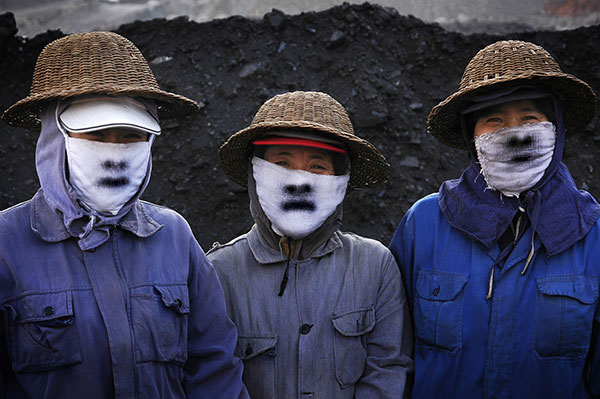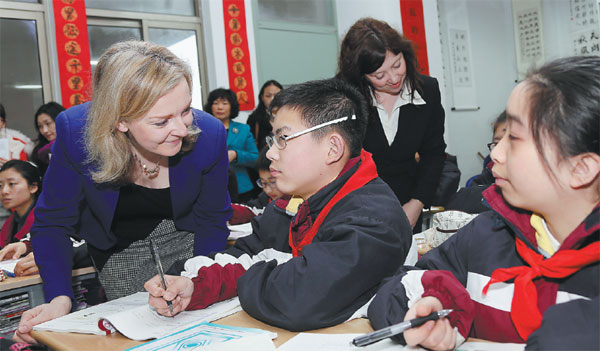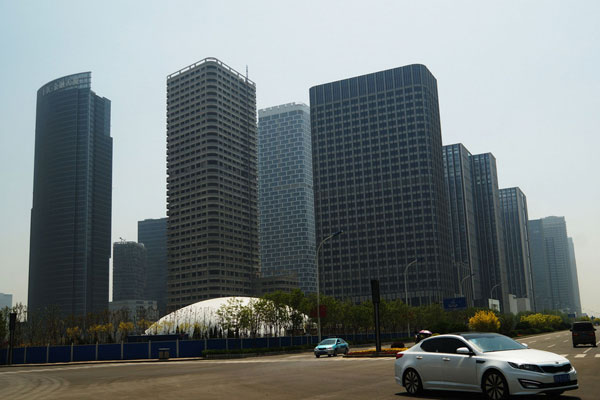China continues cash injections into money market
Updated: 2015-08-20 17:15
(Xinhua)
|
|||||||||||
BEIJING -- China's central bank pumped another 120 billion yuan (nearly $19 billion) into major commercial banks and brokerages via reverse repurchase agreement (repo) on Thursday.
It is the second reverse repo this week after the People's Bank of China (PBOC) unexpectedly put the same amount of liquidity into the market on Tuesday. The first marked the largest single-day cash injection since Jan 2014.
The yield for the seven-day reverse repo still stood at 2.5 percent, according to a PBOC's statement.
Under a reverse repo, the central bank purchases securities from large banks and brokerages with the agreement to sell them in the future as an effective means to tackle short-term money shortage in the market.
Taking into account earlier reverse repos worth 90 billion yuan due on Tuesday and Thursday, the PBOC has made net money injections of 150 billion yuan this week, markedly up from 5 billion yuan a week ago.
In addition, another 110 billion yuan was put in place on Wednesday by the central bank through medium-term lending facility, also a tool designed for banks to borrow from the central bank by using securities as collateral.
Liquidity in the money market has tightened recently due to dropping new yuan funds outstanding for foreign exchange and a depreciating Chinese yuan.
The overnight Shanghai Interbank Offered Rate (Shibor), a key barometer for interbank lending in China, climbed to 1.83 percent on Thursday, up from around 1.4 percent at the end of July, despite the central bank's easing tools.
Analysts recognized the necessity of such measures and expects more powerful policies.
Should the cash crunch linger, the PBOC will not hesitate to lower banks' deposit reserve requirement in a bid to offset possible negative impacts on the real economy, Shenwan Hongyuan Securities said in a research note.
Zhu Haibin, chief economist of J.P. Morgan China, said a cut in the reserve requirement ratio is more likely than a cut in the interests rates in the third quarter.
Related Stories
PBOC economist expects more stable yuan on new forex policy 2015-08-17 10:43
PBOC promises effective steps for yuan stability 2015-08-14 07:53
Yuan value gap basically covered, currency still strong: PBOC 2015-08-13 13:25
PBOC signals important change in managing the exchange rate 2015-08-12 13:10
Online payment most problematic Internet finance service: PBOC 2015-08-08 10:41
China's M2 growth to accelerate: PBOC 2015-08-08 10:38
Today's Top News
Chemical plants to be relocated in blast zone
IMF to extend current SDR basket until September 2016
China-Russia joint military drill no reason for concern
Rebels in Ukraine's Donetsk plan referendum on joining Russia: media
Man in yellow shirt is Bangkok bomber: Police
Top Tianjin official 'responsible' for blasts
Leaders of France, Germany, Ukraine to meet on escalating violence
Bangkok bombing carried out by 'a network': police
Hot Topics
Lunar probe , China growth forecasts, Emission rules get tougher, China seen through 'colored lens', International board,
Editor's Picks

|

|

|

|

|

|






